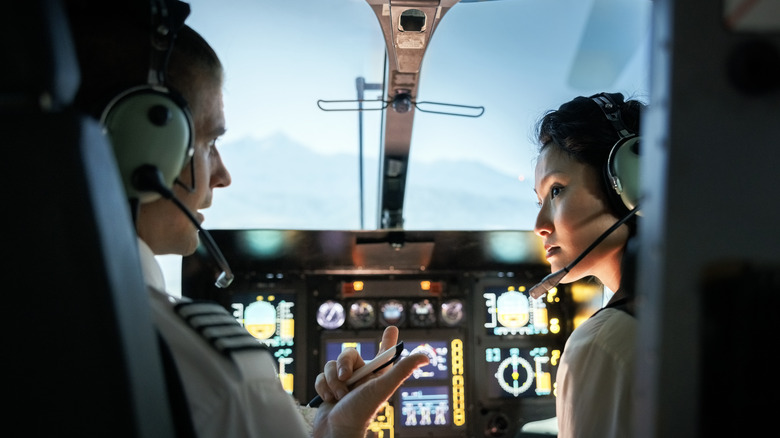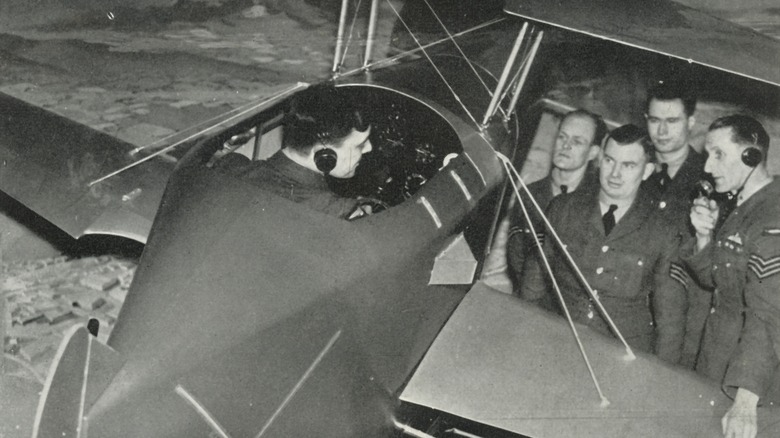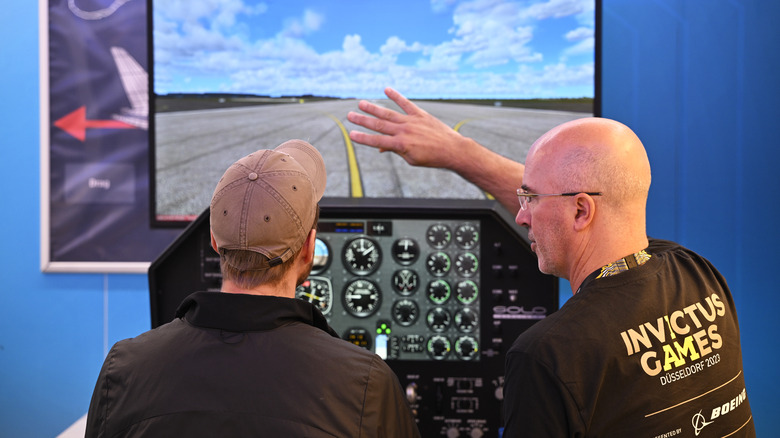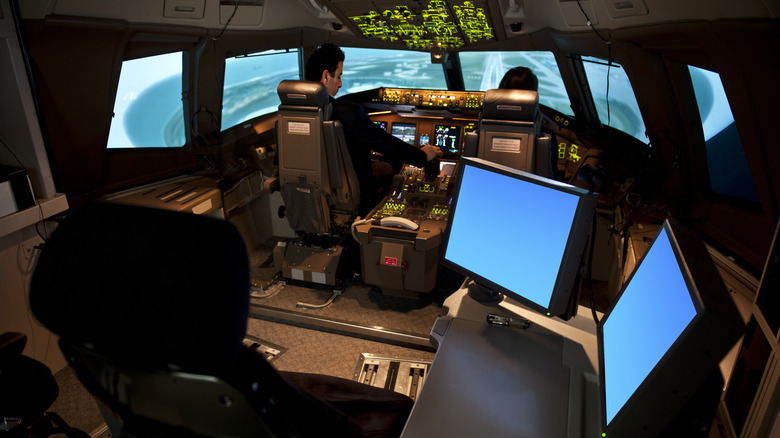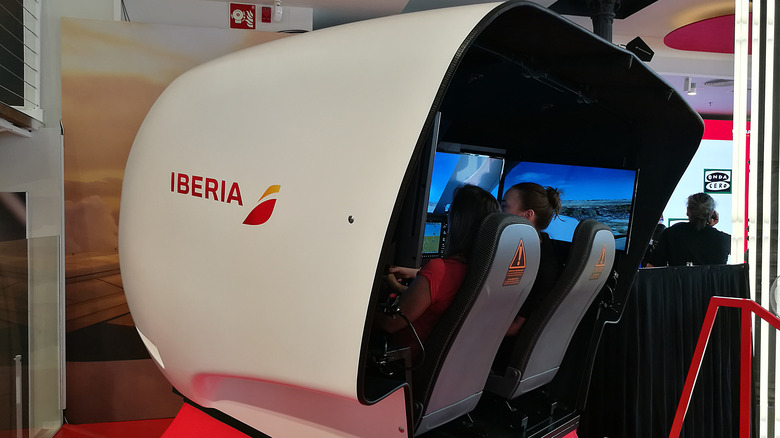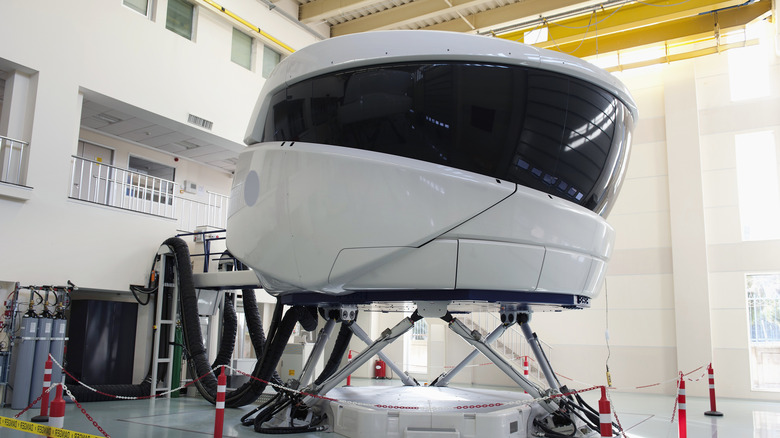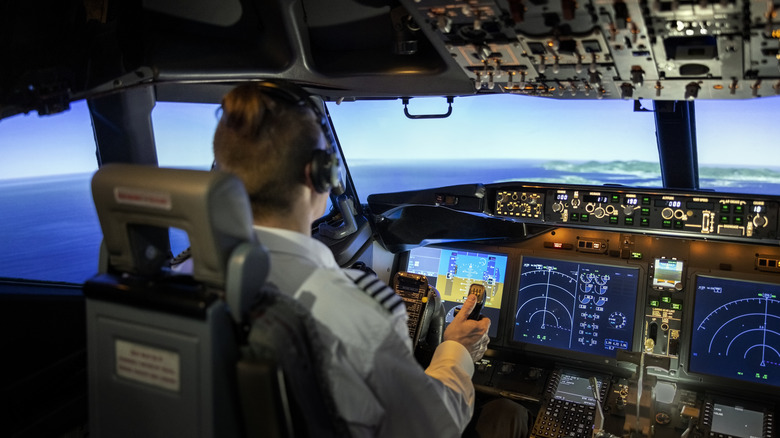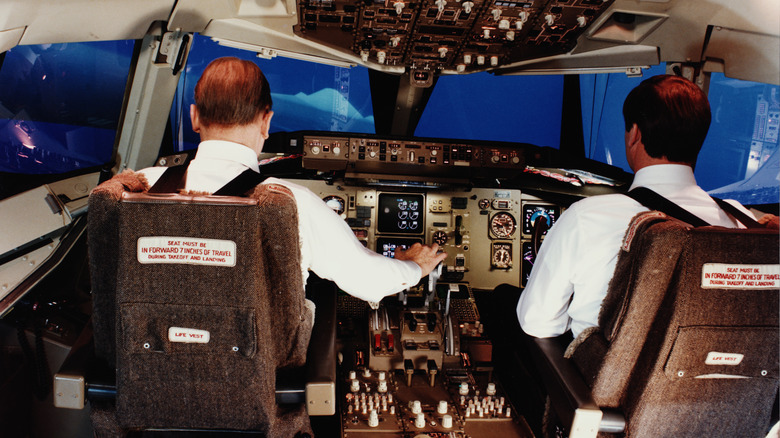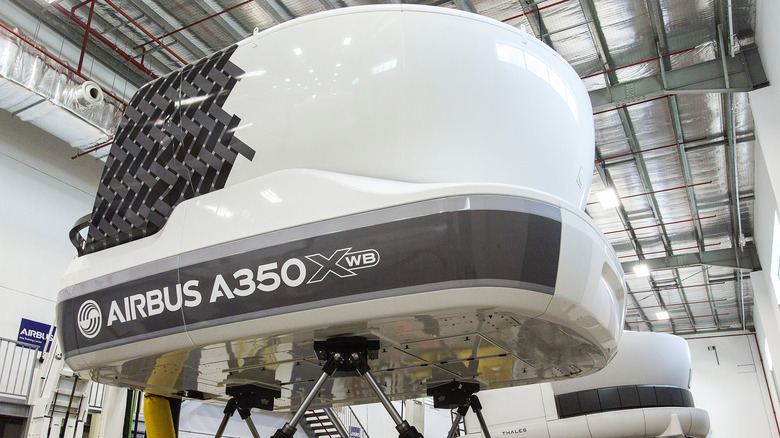Training For Any Situation: How Flight Simulators Prepare Pilots For Emergencies
Even though air travel has become a standard part of our lives, with more and more people flying every year, there is still a level of prestige associated with airline pilots. Estimates suggest that there are more than half a million registered pilots in the U.S. alone, with over 100,000 of them working as airline pilots. Yet, this huge expansion in the number of captains has done little to diminish their stature. A lot of this has to do with the sheer amount of training that pilots have to go through.
After all, learning to fly a plane is not the same as being taught to drive a car. To get fully qualified, pilots generally have to train for several years and log thousands of flight hours. When they aren't in the air, pilots also spend a lot of time honing their skills in flight simulators. These are replicas of real-life cockpits that are designed to accurately recreate the experience of flying a plane in a controlled manner. They essentially allow pilots to train, test new aircraft or features, and improve their skills in unusual situations.
Flight simulators are also vital in giving pilots the chance to prepare for emergencies in a way that doesn't pose a danger to themselves or passengers. Here are all the ways the sophisticated tools can allow pilots to get ready for emergencies that could prove fatal.
The introduction of flight simulation
Flight simulators are, perhaps surprisingly, not that modern an invention. After all, most people will likely think of the sophisticated simulators you see in movies and television shows that look identical to real-life cockpits and wouldn't work without advanced technologies or computers. However, that is not the case, and the idea of a flight simulator as a concept is nearly as old as powered airplanes themselves.
As early as 1910, nations such as France were developing training tools intended to mimic flying. The First World War accelerated the need for simulators, with crude machines created to teach pilots how a plane would feel in the air so they could learn important skills such as shooting at targets. These early examples were usually manually operated but by the late 1920s and early 1930s, electric-powered simulators were being produced that would automatically move and provide feedback to the pilots as they trained. Perhaps the most well-known of these devices was the Link Trainer, which was created by a company originally famous for constructing player pianos and so had the capability of automating actions and reactions.
As time passed, flight simulators became more complex to match the increasingly advanced aircraft they were intended to simulate. Technological improvements have also made them far more realistic so that they more closely resemble what it is genuinely like to fly an aircraft. Yet, even today's modern flight simulators are based on the same principles as the very first examples. They not only provide pilots with a way to train safely from the ground, but also allow them to experience a range of different conditions and scenarios that might not be possible to do in the air due to the unpredictable nature of the weather.
Immediate feedback on decisions
In an emergency, every single second is vital to avoid catastrophic consequences. That means that pilots need to be able to do a lot of things at the same time to problem solve and take the appropriate action in as short of an amount of time as possible. Although it may seem like a contradiction, this doesn't necessarily mean having the quickest reactions. Pilots have to be able to assess the situation, take in as much information as possible, and then make the correct decision before acting. Quickly jumping in and doing something without thinking it through first could exacerbate the problem and make it worse.
That's where flight simulators are particularly useful, as they allow pilots to train under circumstances where they can get immediate feedback on their decisions and behavior. Instructors can pause the simulation at any time to ask the pilot to explain their reasoning or apply corrections, which can then be put straight into action without having to start the entire experience again. If they get something wrong, they'll know about it straight away and can then make adjustments as they try again without having to worry about landing, taking off, or getting the aircraft set up and ready for flight again.
It also provides pilots with the ability to try out new techniques or practice in novel situations that they might be unfamiliar with and get immediate feedback about what they did right and what went wrong, allowing them to improve and implement any changes quickly and efficiently.
Improve radio communication skills
Anyone who has ever seen a movie or television show featuring air travel will know that pilots and air traffic controllers have a very particular way of speaking. They use a lot of words that sound meaningless to ordinary people, but they don't talk like that just to confuse passengers. These professionals use terms and phrases that are specifically designed to provide clear and concise instructions. Crew and controllers need to know where every aircraft is at all times, as well as their speed, trajectory, and intended location, to effectively manage traffic and avoid collisions.
A huge part of a pilot's training is developing their communication skills as part of a process known as crew resource management. This aims to allow for efficient communication and logical decision-making in cockpits, with pilots sharing the correct information so they have a thorough understanding of the situation and can choose the best course of action. It is a vital part of a pilot's education because the vast majority of air accidents are the result of human error.
Learning all of this while flying an aircraft can be difficult enough, but doing so in the air when you and everyone else onboard are also at risk is far more daunting. To help combat this, pilots do a lot of the communication and crew resource management training safely on the ground where they can take in the information and learn how to manage their concentration across multiple tasks in a setting that poses no danger.
Learning to operate a multitude of aircrafts
Although your driver's license gives you the ability to drive almost any car, that isn't the case with a pilot's license. Most pilots will be trained to fly a particular type of aircraft and can't just swap between different airplanes. While the basics of flying a plane are similar across all makes and models, there are significant differences in the way each aircraft operates. One model might have hydraulic pistons and controls while another will use the electronic fly-by-wire system, for example. The many dials and instruments that make up the cockpit are also specific to that airplane, as are the different systems and routines that pilots have to manage.
After all, pilots have to account for a variety of systems on any aircraft they are flying. These range from the performance of the engine and the positions of the wings and flaps to fuel management and navigation. To do all of this, they need to be intimately familiar with every aspect of the airplane they are flying so that they know exactly where every switch is and what every instrument does without having to waste time searching.
This is where flight simulators can prove invaluable. As well as providing constant training on aircraft that pilots are already familiar with, they can also be used to help the crew become accustomed to different airplanes. This is especially useful with new aircraft when airlines may not have a large number of them available for training. They can instead use simulators so that pilots can familiarize themselves with the new model and be up to speed by the time manufacturers begin to deliver the aircraft to airlines.
Practicing dangerous situations from the ground
One of the hardest things that pilots can train for is emergency situations. It isn't safe or practical to take an aircraft up into the sky and then purposely cause it to suffer from a dangerous malfunction. Not only does this put those onboard at risk, but it could lead to damage to the aircraft — expensive pieces of equipment that cost tens of millions of dollars — and may be impossible to replicate consistently in the air. Flight simulators mitigate against all of these issues, as the crew and aircraft are not at risk and instructors can program certain situations to play out exactly as they want every single time.
An in-flight emergency can be set up in the flight simulator and run dozens of times in a row, giving pilots plenty of experience in navigating the problem and becoming familiar with exactly what they need to do if they encounter the problem while flying. This could include issues such as engine failure, a damaged wing, or a loss of power to instruments in the cockpit, with the flight simulator accurately representing what these problems would feel like for the pilot.
With a flight simulator, pilots can also experience the consequences of their actions, learning what might happen as a result of a poor decision without any tragic results. This is impossible when flying an actual airplane, as wrong choices could result in a crash. Flight simulators allow pilots to make these mistakes and learn to correct them, applying improvements and adjustments to their procedures so they don't repeat them in the future.
Exposure to different weather and lighting
Aircraft are flown in all weathers and conditions. Just because it is raining heavily or dark due to the time of day won't mean that an airplane won't take off or carry on with its journey. If you've flown before and experienced turbulence, then you'll know firsthand that aircraft are designed to be able to travel through even very high winds, even if it might be a little uncomfortable for those onboard.
Of course, pilots have to be trained to fly in a variety of conditions, as these can affect how well the aircraft performs. High winds might mean that the steering input and flaps of the wings have to be adjusted, while rain or snow could change the approach speed and amount of runway needed for taking off and landing. Training in these particular circumstances can be difficult, though, as it is hard to predict when they might happen and a pilot unfamiliar with these conditions might make mistakes.
Flight simulators can emulate a whole range of conditions, allowing pilots to test their skills and train. The best and most advanced simulators can simulate everything from freezing temperatures and inclement weather to sudden changes in air pressure. By training in these conditions, pilots can become more familiar with what they should expect and how they can make appropriate changes to take into account the new conditions. This should make them more comfortable if they encounter these circumstances while in the air and reduce the chance of errors.
Calm emergency drills help pilots prepare for the real deal
If a pilot wanted to train for a particular scenario in an actual aircraft, it would be an expensive and timely endeavor. The airplane would have to circle back and reposition each time, all the while burning fuel and using equipment that could be used for flying passengers. Of course, there's also the fact that pilots are limited in terms of how long they can stay in the air, with the aircraft needing to land and then take off again after maintenance and refueling. That makes it an inefficient way to practice a lot of the time, especially when it comes to performing drills to prepare for emergencies.
None of this applies to a flight simulator. While they do need to be powered, the cost of running a simulator is a fraction of what it would cost to fly a plane. More importantly, though, they can be run over and over again immediately, with the user simply setting up the scenario and loading it in after each attempt. This can prove invaluable when it comes to helping pilots stay calm under pressure if a real problem does occur, as they can rehearse dangerous situations hundreds of times.
Having this knowledge from training in the flight simulator gives pilots the confidence and skills to tackle unexpected problems. They won't have to spend as much time thinking about what they need to do or rely on instinct, even when under stress. For example, if they have run through engine failure scenarios previously on a flight simulator, a pilot should be more comfortable dealing with the issue as they'll know the procedure, how the aircraft is likely to behave, and what they have to do as they have done it many times before.
Data collected from simulators aids in future safety innovations
Flight simulators contribute to aviation safety in other ways outside of preparing pilots for emergencies and assisting them in training. These machines can collect vast amounts of data, with pilots logging thousands of hours of flight on them. This presents airlines and manufacturers with a huge amount of information about every aspect of an aircraft, from how they perform under specific scenarios to the layout of the cockpit. Using this data, it is possible to fix potential flaws or even discover problems with controls and their location, allowing those in charge to make changes that make flying easier and more intuitive for pilots.
Flight simulators are often used in the design process when manufacturers are developing new models. They can be used to provide proof-of-concept and see how the aircraft would perform if certain changes are made. Although they are not a substitute for test flights, they are particularly useful early in the process, helping designers to predict airplane behaviors and answer "what if" questions without the need for expensive testing.
Data collected from flight simulators is also used to develop new training techniques. Instructors and machine learning can detect patterns in the way that pilots train on a flight simulator and develop new techniques that account for any issues or flaws in the current methods. In that sense, flight simulators can constantly improve as they are used simply by evaluating how effectively pilots perform.
